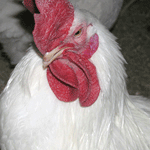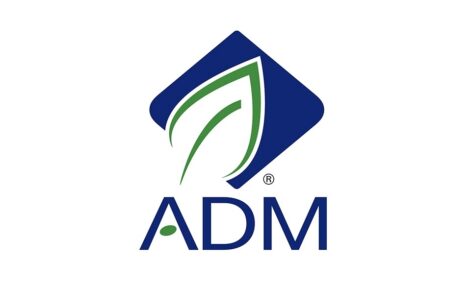



Immortalising An Age Old Strain Of Poultry
CANADA - University of Alberta poultry researchers, keepers of the broiling chicken's royal bloodline, will be celebrating the 50th birthday of the dinner-table staple tomorrow. |
| The U of A's random bread line of 1957 broiler chickens turns 50. |
To mark the occasion, the U of A's Poultry Preservation Program is hosting a group of founding geneticists to celebrate the 1957 decision to preserve a certain genetic strain of broiler chicken to ensure it would live on.
"At the time, it was thought by Agriculture Canada that genetic progress was happening pretty quickly and that a random-bred standard should be maintained to preserve those genetics," said Doug Korver, a professor of poultry nutrition in the Faculty of Agriculture, Forestry, and Home Economics. "Preserving genetic stocks is important in poultry, because we use so few individual strains to produce a lot of the poultry in the world."
The strain also provides a good yardstick to compare various traits in modern-day broilers.
The roasting chicken - known as a broiler - lands on the common dinner table fried, roasted, even as fast food in the bucket and is prized for its tenderness and plumpness. The 1957 bird is five times smaller than today's commercially grown version, but that's a positive development - "it shows what huge genetic progress has been made," said Martin Zuidhof, a poultry researcher from Alberta Agriculture and Food who works with the U of A's poultry program.
Though it might seem inferior to today's version, it is important to keep the genetic strength of the 1957 chicken alive in case of unforeseen issues like illness that could threaten the existence of the lines developed over the past 50 years.
One of the issues is food security, said Zuidhof, citing the threat of bird flus, which wipe out entire flocks of chickens almost overnight. "Should something happen in the industry that caused a major loss of numbers, we have a strain that is unselected and closer to the indigenous chicken. It is just one more approach to securing the food supply going into the future."
The random-bred program involves the yearly selection of 400 eggs from 300 chickens, using such numbers to minimize inbreeding while preserving the genetic diversity of the flock
"As opposed to the artificial selection programs, which the industry uses to select traits that are commercially viable, these chickens have not been selected for those traits," said Zuidoff. "However, when you random breed a population, some of the recessive traits that were selected against colour, for instance, start to come back because they get distributed throughout the population. Now we have some coloured birds."
Beyond colour, size and rate of egg-laying, Zuidoff said the 1957 flock maintains many other fascinating traits, such as its immune response.
"The modern broiler mounts a fairly vigorous immune response but doesn't divert a lot of nutrients away from growth in order to respond to a pathogen," he said. "The unselected strain mounts more of a general response, it lasts longer and it has more of an effect on slowing down growth, meaning when the animal is challenged it will divert a lot more nutrients to immune response at the cost of growth."
Zuidoff said selecting for this and other growth-oriented traits and nutrition is the only reason for gains in the commercial poultry industry, and not hormones.
The preserved, 1957 strain is a good picture of genetic process for the industry and is a good visual for dispelling the myth of feeding hormones to commercial poultry, he said, adding that gains in poultry genetics have cut the time it takes to produce a broiler ready for the table to drop to 35 from 90 days in just 50 years.
"We do research that shows that about 80 per cent of the growth rate that has come since 1957 has come from genetics and 15-20 per cent comes from nutrition. People often assume that because chickens are so different from how they were 50 years ago, it must be to some technology like hormones. It's all based on traditional selection of the best individuals and nutrition."
The birthday party thrown for the 1957 flock was also conceived as a way to help celebrate Donald Shaver, who will be awarded an honorary degree from the U of A on Nov. 21 in recognition of his poultry breeding contributions done on his Kitchener, Ont. farm.








